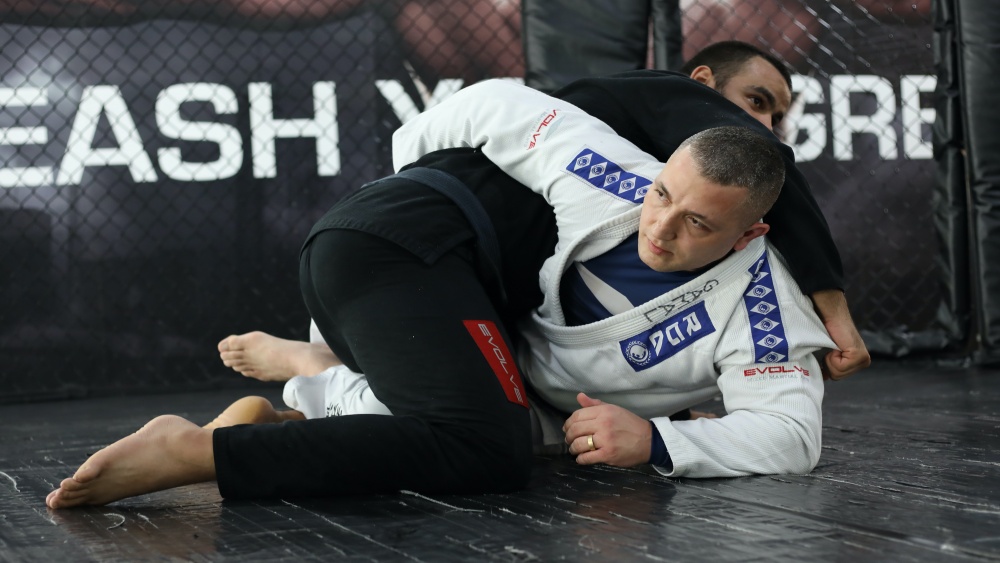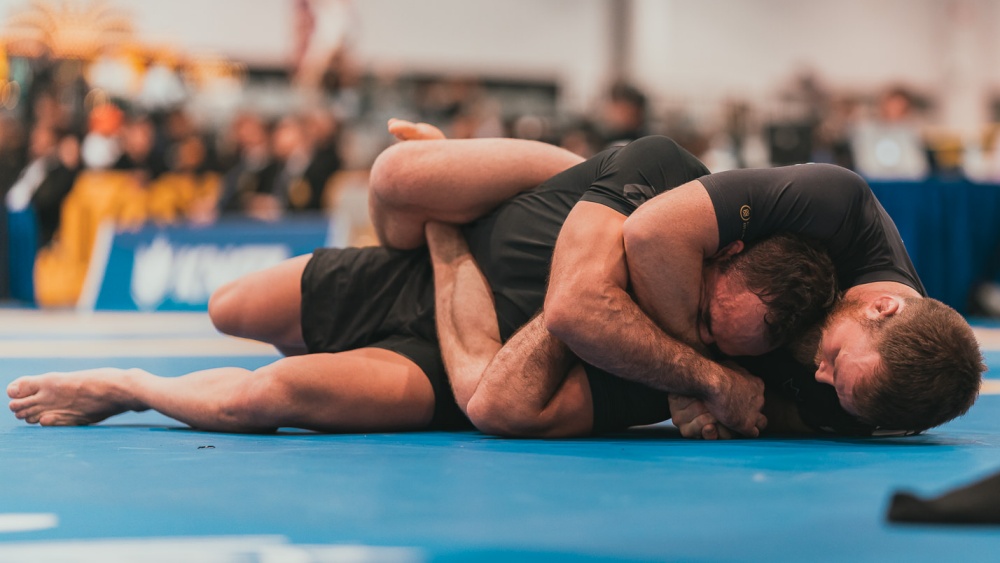Many grapplers enjoy the guard-playing aspect of Brazilian Jiu-Jitsu. From a defensive perspective, the guard allows you to set up attacks by sweeping the opponent so that you can land in a dominant position or apply various submissions that can end the match. BJJ is an open door for innovation. While nothing beats the fundamentals, as you become more advanced, playing guard enables liberty, allowing you to play it creatively and, to some extent, even bypass some of BJJ’s fundamental rules. Today, we will talk about an unconventional way of playing the guard in BJJ, the octopus guard.
What Is The Octopus Guard In BJJ?
Eduardo Telles, a BJJ world champion known for his unorthodox grappling, invented the octopus guard. Telles is known for fighting from the turtle position and sometimes even lets his opponents get into the position as he attacks with sweeps and submissions. With his unconventional grappling style, Telles has developed the octopus guard, which is very tricky to deal with if you’re unfamiliar with how the opponent can attack from the position.
The octopus guard is initiated from the closed and half guard. Typically, the closed guard is fundamentally used to break the opponent’s posture, apply sweeps, submissions, and get behind the opponent using techniques like the arm drag. The octopus guard is used in the closed guard after clearing the opponent’s hands and forcing them to just one side, as you get below their shoulders in a sit-up position while using your near hand to grab behind their far lat. Your arm wrapping behind the opponent makes it difficult for them to posture up, thus, exposing their back.
While the octopus guard may seem like the opponent on top is about to pass and secure the mount or side control, the guard is challenging to pass. Though taking the back mount is only one of the options, you can also attack with the calf slicer or a kimura, as it is a common defensive reaction from the opponent to get an arm across your body to prevent the octopus guard.
Octopus Guard from Closed Guard
The octopus guard is a versatile guard that can be effectively used by grapplers of any size against any opponent. If you are new to BJJ, you must be used to the fundamental concepts of the closed guard before utilising the octopus guard in your game.
The first setup from the closed guard is when the opponent is postured. Your primary goal should be bringing the opponent’s elbow into their centre line, as it will be challenging to create an angle and go to the side if they are in a chest-to-chest connection with you. You can do so by having a two-on-one grip, arm drag, or using your legs to pull the opponent as you move your head in the opposite direction. Move your body to the side and post your elbow on the mat as you sit up. After sitting up with your lat underneath the opponent’s armpit, reach for their far lat. This should put you on the octopus guard.
To sweep the opponent with the octopus guard using the two-on-one grip as a setup (your left hand grabbing the opponent’s left wrist thumb down, and your right hand holding their tricep), drag their left arm across to your left to create an angle. This will immediately put you in a position to grab their far lat with your left hand. Post your left foot to the mat and post your right elbow as you sit up.
Your goal from this position is to get your head higher than the opponent by posting your right hand on the mat, not just with the elbow. Your hips should be higher than the opponent, which you can do so by posting your left leg on the mat. This puts you in a strong position where the opponent will find it difficult to counter. On the other hand, having your head and hips lower than the opponent will put you in a vulnerable position where they can smash you with the crossface. You can now do a hip bump and sweep the opponent to your right.
Octopus Guard From Half Guard
In today’s grappling, the octopus guard is mainly used from the half guard, particularly the knee shield. Bring yourself close to the opponent from the shallow knee shield where your knee doesn’t pass the opponent’s centre line. A common reaction of the opponent from half guard is to smash your upper body using the cross face. To prevent this, keep your hand tight to your head as if you’re doing a high guard in boxing, and close the distance until you can pass the opponent’s arm over your head.
Maintain the half guard and enter the octopus guard by grabbing the opponent’s far lat as your other hand posts on the mat. A key detail is to put enough weight on the opponent’s hands by keeping your elbow tight on their back while grabbing below their armpit; if the opponent postures up, lean back to maintain the weight of the octopus guard.
Octopus Guard To Front Head
The good thing about playing the guard is that you can always be creative. As Craig Jones suggests, if the opponent backs away, you can just stand up. Standing up encourages activity from your training partner as it makes them want to hold you down.
From the octopus guard in half guard, you can alter your grip from the opponent’s far lat into a front headlock and sit out as you stand up. You can use this opportunity to further snap the opponent’s head down and start attacking with a chin strap and chokes like the D’Arce, guillotine, and anaconda. These attacks are accessible from the octopus guard coming from bottom side control because your inside legs aren’t as trapped.
Conclusion
The Octopus Guard is an excellent guard where you can be creative as you want to be. Practice the octopus guard to get used to the ins and outs of the position, and we guarantee that you will surprise many unsuspecting training partners.
You may also like:

















